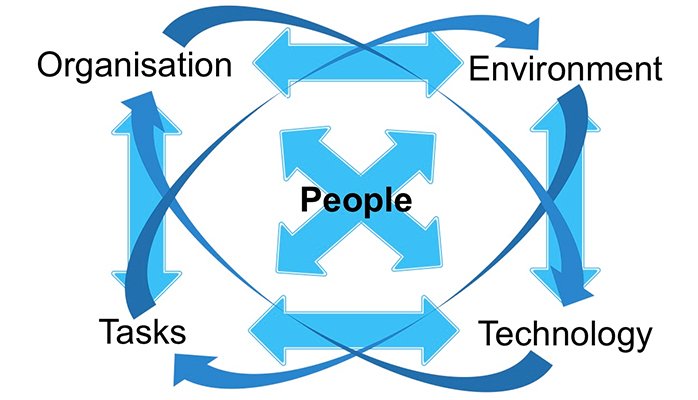What is Human Factors Anyway?

What do these events have in common?
- In 1986, operators at the Chernobyl Nuclear Power Plant were conducting an experiment that required them to operate the reactor in an unstable power level. Because they were under pressure to complete the experiment, they disabled several safety systems and modified procedures on the spot to enable the reactor to operate in this state. One researcher later reported that they were “mesmerized by [a] mindset to complete the experiment.”[1] We know the result of this experiment: “An explosion and fire released large quantities of radioactive particles into the atmosphere, which spread over much of the western USSR and Europe.”
- In 2006, a Predator drone operated by Department of Homeland Security crashed in Arizona. The drone was operated by a pilot and a sensor operator, who sat side by side at nearly identical consoles that could be configured for either role. Each console had a lever that controlled fuel flow or camera aperture, depending on the configuration. When flight control (pilot role) was switched from one console to another, the standard procedure was not followed and the aperture setting became the throttle setting and the drone’s engine shut down, contributing to the crash.
- My alarm clock has a switch for normal operation and time setting mode. When in time-setting mode, the snooze button changes the time. So if I accidently leave the switch in time-setting mode and the alarm goes off, hitting the snooze button just changes the time, making the clock inaccurate.
These are all instances, large and small, where equipment design or organizational factors caused human error. These errors occurred at the interface of a human being and a technical system, as complex as a nuclear power plant or as simple as an alarm clock.
Human factors is the discipline that studies this “man-machine” interface. Human factors applies “what we know about people, their abilities, characteristics, and limitations to the design of equipment they use, environments in which they function, and jobs they perform.”[4] Human factors specialists help reduce error and maximize productivity, performance, and safety.
This series of articles will take a closer look at the discipline of human factors. This article, Part 1, will look at the human factors profession; Part 2 will look at examples of influence human factors has had on aviation, power plants, automobiles, and software. Then Part 3 will look at take a closer look at how human factors contributes to one industry, software development.
The Human Factors Profession
Consider a simple situation: a worker monitors a dial (either a physical dial or a software display) and takes an action if the value shown on the dial exceeds a certain limit. What are some of the human factors concerns here?
- There are sensory, motor, and physical concerns: Is the dial legible (within reading distance, well lit, unaffected by glare, etc.)? Is the button clearly labeled, within reach, and easy to push? Is the work environment suitable for the task (worker ergonomics, temperature, etc.).
- There are cognitive concerns: Is the worker distracted by other tasks? Is the worker alert? Is the worker bored (and inattentive)? Alternatively, is the worker stressed?
- Finally, there are organizational concerns: Was the worker properly selected (meaning qualified to perform the job)? Was the worker properly trained? Was the task properly explained to the worker?
Human factors specialists study and design for issues such as these.
Many universities offer degrees in human factors. The Human Factors and Ergonomics Society lists 16 schools offering undergraduate degrees[5] and 70 offering graduate degrees.[6] Some human factors specialists enter the field from other backgrounds, such as psychology, engineering, biomechanics, industrial design, physiology, or anthropometry. Many fields are related to human factors, including human-computer interaction, user interface design, and industrial design.
Human factors specialists work in technical professions such as software, aviation, or nuclear power. Their focus is usually minimizing worker error, or increasing productivity or worker comfort. They work for the government, and may be involved in setting regulations or investigating accidents. Others hold positions in academia. They are increasingly called to testify in civil cases involving consumer products, premises, or transportation systems. For example, a human factors specialist could evaluate worker safeguards in a workplace injury case, product labeling in a product liability case, or user interface issues in a distracted driving case.
A Continuing Need
As new technologies are introduced, we need to be able to use them safely and effectively.
- How do we deal with the increasing stream of social notifications forcing their way into our lives (e-mail, Facebook, Twitter, etc.)?
- Automation is changing the way we interact with technology. For example, air travel is becoming increasingly automated, eliminating the potential for many types of error, but introducing the concern that pilots may lack the experience to respond (e.g., to quickly regain their situational awareness) if automated technologies fail.
- Can our aging population better use technology to remain healthy, happy, and productive?
There is opportunity for human factors in all of this. Human factors contributions allow us to be more productive, to be more efficient and, perhaps most important, to stay safe. Humans make errors and those errors have consequences. Consider the aviation industry, where error rates have been extensively studied. According to Boeing, “Human error has been documented as a primary contributor to more than 70 percent of commercial airplane hull-loss accidents.”[7] According to planecrashinfo.com, since the 1950s, 53% of all fatal accidents have been caused by human error.[8] Or consider medicine: “Medical errors cost tens of thousands of lives in US hospitals each year—more than deaths from highway accidents, breast cancer, and AIDS combined.”[9]
There is a long list of contributions that human factors has made in aviation as well as in other industries: advanced flight deck design (which also reduced crew size, allowing flights to be operated more economically), digital maps, improvements in aircraft evacuation, improved processes for making integrated circuits (errors reduced by 80% and damage and breakage reduced by 68%), among many others.[10]
From its beginnings in the aviation, industry, human factors has come a long way, and now plays a critical role in many industries. In Part 2 we will take a closer look at the work that human factors engineers do in some of these industries, by examining some real world examples where human factors deficiencies have had serious repercussions.

